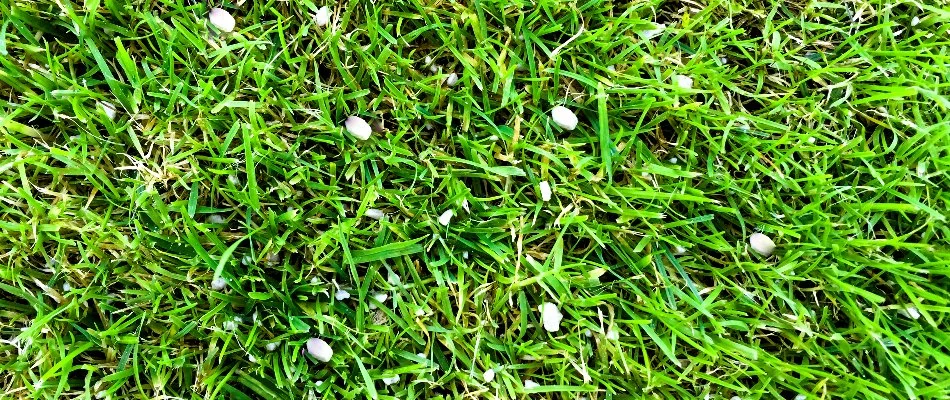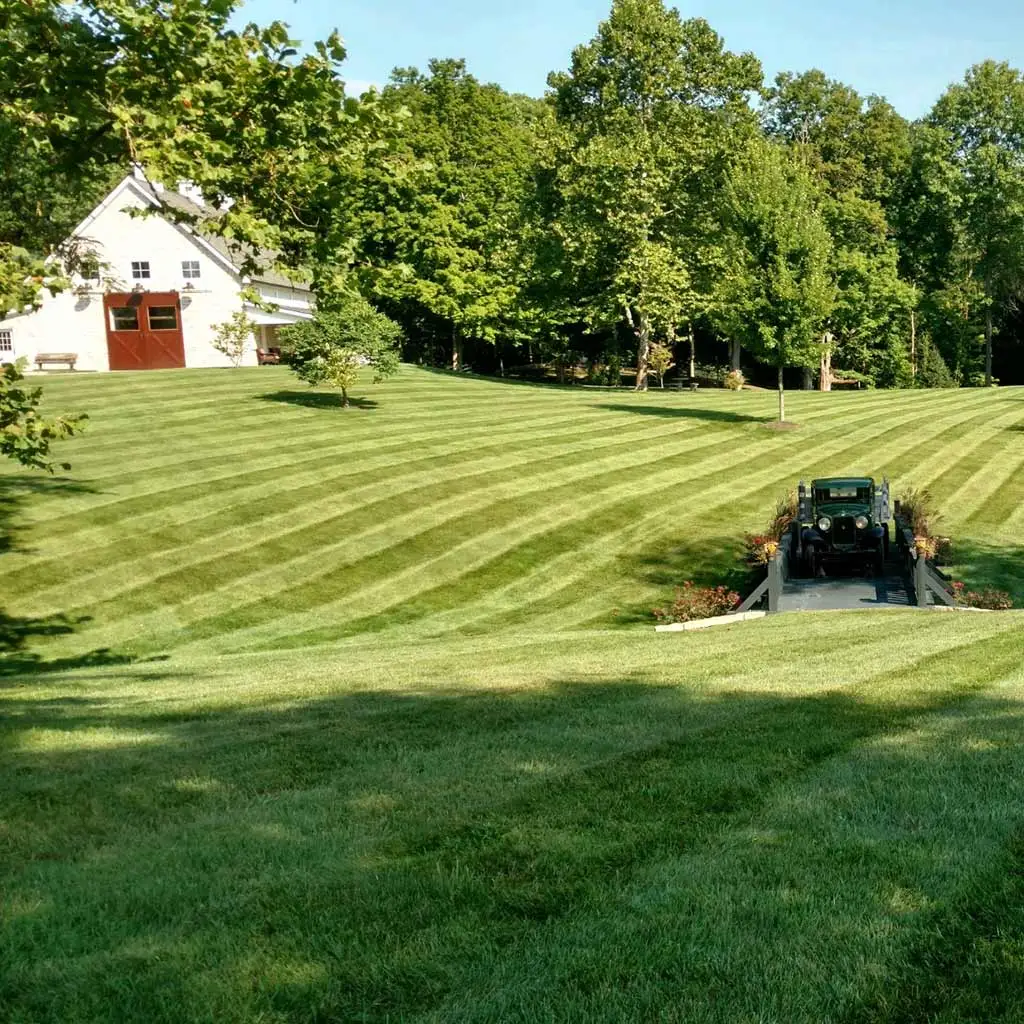Summer is stressful for your lawn in Ohio, especially with the hot temperatures. Because of this, you'll want to remember to fertilize it during this season! Summer fertilization provides essential nutrients that help your lawn survive these stressful conditions while maintaining its pristine appearance. Neglecting to do this can result in weak, brown, or even dying grass, also making it difficult to recover when fall arrives. To maintain a healthy, vibrant lawn, it’s recommended to schedule at least three fertilizer treatments during summer: one at the beginning, one in the middle, and one near the end.
How do summer fertilization treatments benefit your lawn?

Summer is tough on your grass, as the heat can put it under a lot of stress. Because of this, fertilization treatments play a vital role in maintaining the health and vibrancy of your lawn during this season. These treatments provide it with the essential nutrients it needs to make it through and survive these stressful conditions so that it stays healthy. Not only that, but this nourishment will also keep it looking its best! While many lawns may become overwhelmed by the heat and display the appearance of that, yours will have access to nutrients that bolster its vibrant green color and keep it robust even during the summer!
Nitrogen, phosphorus, and potassium are the three essential nutrients fertilizers provide to your lawn.
What happens if you don't fertilize your lawn in the summer?
Neglecting to fertilize your lawn during the summer can have detrimental effects on its health and appearance. Without the necessary nutrients, your grass may become weak, turn brown, and, in severe cases, even die. After all, the summer months can be particularly harsh enough already, but it becomes even more so when your lawn doesn't have the nourishment it needs to help it survive.
Furthermore, skipping summer fertilization treatments can hinder your lawn's ability to recover when fall arrives. Grass that has not been adequately nourished during the summer may struggle to regain its strength and vitality, making it more susceptible to diseases, weed infestations, and damage caused by cold weather come winter; this will leave long-lasting effects that will even show once the new spring season rolls around.
How often should you schedule lawn fertilization treatments in the summer?
To ensure your lawn receives consistent and adequate nourishment throughout the summer, it is recommended to schedule multiple fertilizer treatments. Ideally, you should aim for at least three applications: one at the beginning, one in the middle, and one towards the end of the summer. However, additional treatments may be needed.
Dividing your fertilizer applications throughout the summer helps provide a steady supply of nutrients when your lawn needs them the most. The initial treatment in the beginning of summer kickstarts healthy growth and prepares it for the impending hot temperatures, while the mid-season application sustains its vigor. The final treatment towards the end of summer replenishes its nutrients, strengthening and helping it prepare for the fall and winter seasons. That way, your lawn remains robust, lush, and resilient year-round.
Call us today to enroll in our comprehensive lawn fertilization program!
Routinely fertilizing your lawn is crucial to sustaining its optimal health and beauty throughout the year. Fortunately, that's where our team at Hoffmans Lawn & Fertilization comes in! We offer a comprehensive fertilization program, which involves six applications from early spring to late fall, with three of those happening during the summer to ensure it has the nourishment it needs to survive and even thrive during this stressful season. We offer our fertilization service to commercial and residential properties and HOAs in Delaware, Lewis Center, Powell, and surrounding areas in Ohio. Call us today at (740) 318-5296 to enroll.




Comments (0)
Thanks for your comment!
Thanks for your feedback! Your comments have been successfully submitted! Please note, all comments require admin approval prior to display.
Error submitting comment!
There is a problem with your comment, please see below and try again.